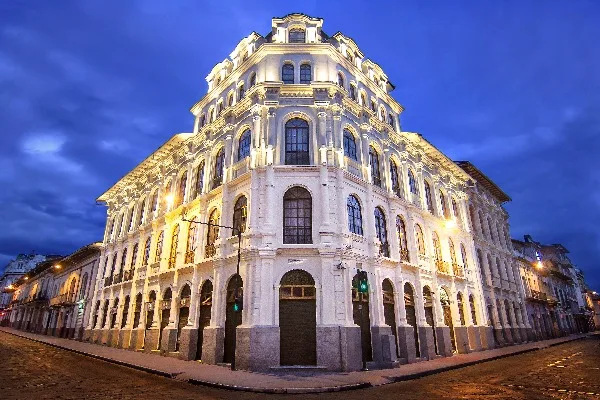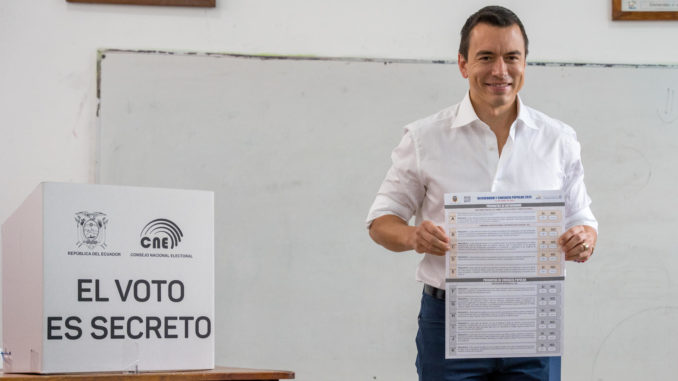Municipal council finally sets the tram fare
After more than two years of false starts, Cuenca’s municipal council has finally established the fare for the city tram system. It will be 35 cents.

The tram on a test run in the historic district in January.
Following the rejection of a proposal for a 30 cent fare — to match that of city buses – the council voted 11 to six for the 35 cent rate but with alternative fares for single rides and for frequent riders who purchase a special card. The single ride rate, aimed at tourists, will be one dollar while those who ride the tram at least five time during a 15-day period will pay 30 cents.
Municipal council debates on the tram fare, most of them contentious, date back to 2018. “After much discussion and disagreement, we have finally resolved the issue and can move forward providing world-class service to the citizens of Cuenca at an economical cost,” said Xavier Barrera following Monday night’s vote.
The council also voted to maintain the 50 percent discount for the disabled, senior citizens and students.
According to studies conducted by the University of Cuenca and a Spanish consulting firm, the tram will begin service with about 40,000 daily riders, meaning the actual cost for service will be 82 cents per ride. Based on the experience of other tram and trolley systems, ridership will increase over time, reaching 60,000 to 70,000 within three years.
“There is a proven trajectory with very little variation of tram ridership based on the experiences of cities around the world,” says transportation consultant Andrés Castro. “Systems such as Cuenca’s are popular at first with tourists and young people but attract more riders over time as the general population realizes the speed, comfort and safety of the system. When passengers realize they can get from one point to another three times faster on the tram, they will come on board.”
Castro adds that the tram will never replace buses. “The system begins with a single line that will expand over time. It is not intended to go everywhere. The intention is to integrate with the buses to provide an efficient transportation system.”
During the council discussion prior to Monday’s vote, some councilors expressed concern for the size of the subsidy necessary to operate the tram. “We must have accurate numbers about the operational costs since it will be the citizens of Cuenca who will cover the losses,” said Andrés Ugalde. Members of the city tram office responded that numbers and been reviewed and updated to match current estimates.
Barrera said that the subsidy will reduce as ridership increases. “We know this will happen but we also know that, like the buses, some subsidy will always be required. This is a public servce, not a profit-making enterprise.”
According to the city tram office, public operations will begin in June or July. The tram’s maximum capacity is 120,000 passengers a day.



















